Eltako FSR14-4X Handleiding
Eltako
Smarth home
FSR14-4X
Bekijk gratis de handleiding van Eltako FSR14-4X (2 pagina’s), behorend tot de categorie Smarth home. Deze gids werd als nuttig beoordeeld door 83 mensen en kreeg gemiddeld 4.3 sterren uit 42 reviews. Heb je een vraag over Eltako FSR14-4X of wil je andere gebruikers van dit product iets vragen? Stel een vraag
Pagina 1/2

GB
4-channel impulse switch with integrated
relay function, 1 NO contact per channel
4A/250V AC, incandescent lamps
1000 watts, potential free from the power
supply, with DX technology. Bidirectional.
Only 0.1 watt standby loss.
Modular device for DIN-EN 60715 TH35
rail mounting. 1 module = 18 mm wide,
58mm deep.
Connection to the Eltako-RS485 bus. Bus
cross wiring and power supply with jumper.
Patented Eltako Duplex technology allows
you to switch normally potential free
contacts in zero passage switching when
230V A/C voltage 50Hz is switched.
This drastically reduces wear. To achieve
this, simply connect the N conductor to
the terminal (N) and L to K(L).
This results in an additional standby
consumption of only 0.1 watt.
When all 4 relays of the FSR14-4x are
switched on, a power of 0.7 watts is
required.
If supply voltage fails, the device is
switched off in defined mode.
Function rotary switches
RS485 bus actuator
4-channel impulse switch
FSR14-4x
30 014 001 - 1
Only skilled electricians may install
this electrical equipment otherwise
there is the risk of fire or electric
shock!
Temperature at mounting location:
-20°C up to +50°C.
Storage temperature: -25°C up to +70°C.
Relative humidity:
annual average value <75%.
Function rotary switches
The channels can be taught-in as ES and/
or ER channel separately from each other.
Scene control:
Several channels of one or several
FSR14-4x devices can be switched on or
off in a scene by one of the four signals
of a pushbutton with double rocker
taught-in as a scene button.
Central commands on PC are sent using
the FVS Wireless Visualisation and
Control Software. To do this, teach-in one
or several FSR14-4x devices.
Use the rotary switches to teach-in the
buttons and test the 4 channels as required.
For normal mode, the middle and lower
rotary switches are then set to AUTO. With
the upper rotary switch the EW time (0-
120 seconds) is directly set for relays or
the RV time (0-120 minutes) for impulse
switches for all channels if necessary.
When wireless motion detector and bright -
ness
sensors FBH are taught-in, define the
switching threshold separately for each
channel using the top rotary switch. The
switching threshold switches the lighting
on or off depending on the brightness (also
motion) (from approx. 30lux in position
0 to approx. 300lux in position 90). If the
FBH is taught-in in position 120, it is only
evaluated as a motion detector. A off delay
of 1 minutes is a fixed setting in the FBH.
An additionally set RV time is not taken
into account.
When wireless brightness sensors FAH60
are taught-in, define the switching threshold
separately for each channel using the top
rotary switch. The switching threshold
switches the lighting on or off depending
on the brightness (from approx. 0lux in
positi on 0 to approx. 50lux in position
120). A hysteresis of approx. 300lux is
permanently set for switch on/off. An
additionally set RV time is not taken into
account.
account
.
Only one FBH or FAH is taught-in per
channel. However, one FBH or FAH can
be taught-in in several channels.
Teaching-in wireless sensors in wire-
less actuators
All sensors must be taught-in in the
actuators so that they can detect and
execute commands.
Teaching-in actuator FSR14-4x
The teach-in memory is empty on delivery
from the factory. If you are unsure whether
the teach-in memory contains something
or not, you must first clear the memory
contents completely:
Set the middle rotary switch to CLR ALL
(or to CLR 1..4 if you only want to clear
one channel and also set the lower rotary
switch to the required channel). The LED
flashes at a high rate. Within the next
10 seconds, turn the upper rotary switch
three times to the right stop (turn clock-
wise) and then turn back away from the
stop. The LED stops flashing and goes out
after
2 seconds. All taught-in sensors or
sensors of a channel are cleared.
Clear individual taught-in sensors in the
same way as in the teach-in procedure,
except that you set the middle rotary switch
to CLR instead of LRN, and operate the
sensor. The LED previously flashing at a
high rate goes out.
Teaching-in sensors
1.Select the required Channel 1 to 4 or
1..4 using the lower rotary switch.
2.Use the upper rotary switch to select
the required teach-in function.
0 = teach in 'direction button';
Rocker is completely taught-in automa-
tically when operating the pushbutton.
Typical connection
Teaching-in wireless sensors in wire-
less actuators
All sensors must be taught-in in the
actuators so that they can detect and
execute commands.
When wireless window/door contacts
FTK oder Hoppe window handles are
taught-in, different functions can be set
with the middle rotary switch in position
AUTO 1to AUTO 4 and linked to maximum
116 FTKs:
AUTO 1 = window closed then output
active.
AUTO 2 = window open then output
active.
In settings AUTO 3 and AUTO 4 the FTKs
taught-in to a single channel are linked
automatically. With AUTO 3 all FTKs must
be closed so that the N/O contact closes
(e.g. for climate control). With AUTO 4 one
open FTK is sufficient to close the N/O
contact (e.g. for an alarm signal or to
switch on the power supply for an
extractor hood).
One or several FTKs can be taught-in in
several channels to allow several simul-
taneous functions in each FTK.
After a power failure the link is restored by
a new signal to the FTK and a signal on
the next status message 15 minutes later.
An additionally set RV time is not taken
into account.
The LED below the upper function rotary
switch performs during the teach-in pro-
cess according to the operation manual.
It shows control commands by short
flickering during operation.
Technical data
Technical data
Rated switching capacity 4A/250V AC
each contact
Incandescent lamp and 1000W
halogen lamp load 1) 230V
Fluorescent lamp load with KVG *
500VA
in lead-lag circuit or non compensated
Fluorescent lamp load with KVG *250VA
shunt-compensated or with EVG * 2)
Compact fluorescent lamps with EVG*
8x7W
and energy saving lamps 5x20W
Standby loss (active power) 0.1W
1) Applies to lamps of max. 150 W.
2) I on ≤10 A
* EVG = electronic ballast units;
KVG = conventional ballast units

The side on which the pushbutton is
first operated is defined for switching
on, the other side for switching off.
5 = teach in 'universal button ES';
10 = teach in 'universal button ER';
15 = teach in 'central control button
ON' with priority;
20 = teach in 'central control button
OFF' with priority;
Central buttons have priority as long
as they are pressed.
30 = teach in 'scene button';
Scene buttons (double rocker) are
taught-in in fully automatic mode.
'Save scenes' as described further on.
45 = teach in 'central control button
ON';
90 = teach in 'central control button
OFF';
3.Set the middle rotary switch to LRN.
The LED flashes at a low rate1.
4.Press the sensor to be taught-in.
The LED goes out.
The position of the upper rotary switch is
unimportant for FTK and PC during the
teach-in process.
To teach-in further sensors, turn the middle
rotary switch briefly away from position
LRN. Continue the procedure from pos 1.
A pushbutton (rocker end) can only
execute the same last taught-in function of
different channels of a FSR14-4x. Different
pushbuttons can execute different functions
of one or more channels of a FSR14-4x.
After teaching-in, set the middle and
lower rotary switches to AUTO and turn
the upper function rotary switch to the
required time. For taught-in window/door
contacts FTK, note that the middle rotary
switch must be in the required setting
AUTO 1 to 4.
Teach in scenes
Teach in scenes
Up to 4 scenes are being saved with a
previously taught-in scene pushbutton.
1.All 4 channels of the impulse switch
can be
turned on or off individually with
a previously
taught-in universal-,
direction-, or central pushbutton as it
is desired for one scene.
2.The switch state is saved within
60 seconds when you press one of the
four rocker ends of the doublerocker
scene button for longer than 3 seconds
but shorter than 10 seconds.
but
shorter
than
10
seconds.
3.If more scenes have to be saved
return back to point 1.
Recall scenes:
Press one rocker of the scene pushbutton
briefly to recall the scene you require.
An additionally set RV time is not taken
into account.
When the middle rotary switch is set to
TEST, the 4 contacts can be closed indi-
vidually using the lower rotary switch:
TEST + AUTO = all contacts open,
TEST + 1 = contact 1 closed,
TEST + 2 = contact 2 closed,
TEST + 3 = contact 3 closed,
TEST + 4 = contact 4 closed,
TEST + 1..4 = all contacts closed.
Assign device address for the FSR14:
The rotary switch on the FAM14 is set to
position 1,
its lower LED flashes red. The
lower rotary switch of the FSR14 is set to
1..4. The middle rotary switch of the FSR14
is set to LRN, the LED flashes smothly.
After the address of the FAM14 was
assigned, its lower LED flashes green for
5 seconds and the LED of the FSR14
goes out.
Delete device configuration:
Set the middle rotary switch to ALL.
The LED flashes nervously. Then turn the
upper rotary switch within 10 seconds
3 times to the leftmost stop (anticlockwise)
and turn it back again. The LED stops
flashing and goes out after 5 seconds.
The factory settings are restored.
Delete device configuration and device
address:
Set the middle rotary switch to ALL.
The LED flashes nervously. Then turn the
upper rotary switch within 10 seconds
6 times to the leftmost stop (anticlockwise)
and turn it back again. The LED stops
flashing and goes out after 5 seconds.
The factory settings are restored and the
device address deleted.
CAUTION! Don't forget 'disconnect FAM'
in the PC tool. While the connection
from the PC tool to the FAM14 exists,
no wireless commands are executed.
Teach-in confirmation telegram of another
bus actuator to the FSR14:
As in the teach-in procedure, only set the
middle rotary switch to LRA instead to LRN.
Teach-in 'switch ON' as 'central control
button ON'. Teach-in 'switch OFF' as
'central control button OFF'.
When an actuator is ready for
teach-in (the LED flashes at a
low rate), the very next incoming
signal is taught-in. Therefore,
make absolutely sure that you
do not activate any other sensors
during the teach-in phase.
!
Eltako GmbH
D-70736 Fellbach
+49 711 94350000
www.eltako.com
03/2013 Subject to change without notice.
Must be kept for later use!
We recommend the housing for operating
instructions GBA14.
Configure FSR14:
The following points can be configured
with the PC tool:
■behavior upon return of supply voltage
■teaching-in of wireless pushbuttons
and wireless Hoppe window handles
with single or double click
■scenes for scene pushbuttons
■add or change sensors
Configure FSR14:
The following points can be configured
Product specificaties
| Merk: | Eltako |
| Categorie: | Smarth home |
| Model: | FSR14-4X |
| Breedte: | 18 mm |
| Diepte: | 58 mm |
| LED-indicatoren: | Ja |
| Stroom: | 4 A |
| Montagewijze: | Montage op DIN-rail |
| Stroomverbruik (in standby): | 0.1 W |
| Certificering: | CE |
| Ingangsspanning: | 250 V |
| Temperatuur bij opslag: | -25 - 70 °C |
| Frequentie: | 50 Hz |
| Aantal kanalen: | 2 kanalen |
| Bedrijfstemperatuur (T-T): | -20 - 50 °C |
| Type product: | Schakelactor |
| Maximaal schakelvermogen: | 1000 W |
Heb je hulp nodig?
Als je hulp nodig hebt met Eltako FSR14-4X stel dan hieronder een vraag en andere gebruikers zullen je antwoorden
Handleiding Smarth home Eltako

12 Oktober 2022
Handleiding Smarth home
- Denver
- Chacon
- Naxa
- FireAngel
- Xiaomi
- Manta
- Netgear
- EMOS
- Technisat
- Reolink
- Easy Home
- Cisco
- CyberPower
- Blumfeldt
- Qnect
Nieuwste handleidingen voor Smarth home

29 Juli 2025
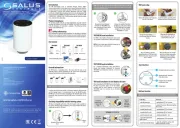
28 Juli 2025
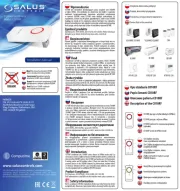
28 Juli 2025

28 Juli 2025

28 Juli 2025
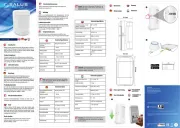
28 Juli 2025
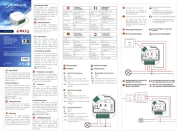
28 Juli 2025
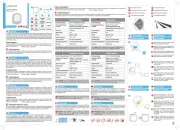
28 Juli 2025
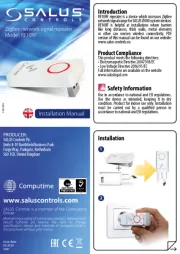
28 Juli 2025
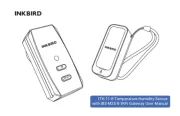
15 Juli 2025